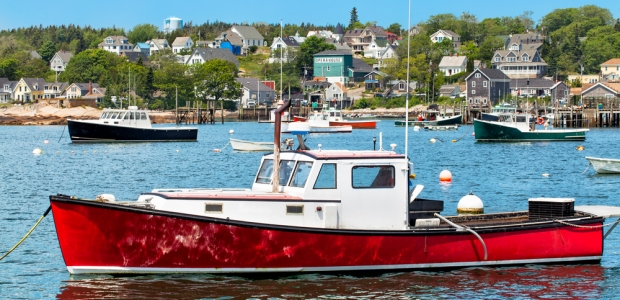
Rapid Ocean Acidification Threatens Coastal Economies in Several States
According to a new report by the NRDC, the anticipated impacts are more widespread than previously believed; major threats seen to oyster, scallop, and clam industries in CA, CT, FL, LA, MA, ME, MD, NC, NJ, NY, OR, RI, TX, VA, and WA.
The first nationwide vulnerability assessment for ocean acidification, published in Nature Climate Change, shows that coastal communities in 15 states that depend on the nation’s approximately $1 billion shelled mollusk (e.g., oysters and clams) industry are at long-term economic risk from ocean acidification. The assessment illustrates that vulnerable communities are not confined to the Pacific Northwest, which has been the primary focal point of attention and resources. Newly-identified communities at risk reside everywhere from Maine to the Chesapeake Bay to the Louisiana bayou.
“Ocean acidification has already cost the oyster industry in the Pacific Northwest nearly $110 million, and jeopardized about 3,200 jobs,” said Julia Ekstrom, who was lead author of the research while a scientist with Natural Resources Defense Council (NRDC), and now is at University of California at Davis. “Our research shows, for the first time, that many communities around the U.S. face similar risks.”
This research study, co-authored by scientists at the NRDC, UC Davis, Ocean Conservancy, and Duke University, and collaborators from nine additional institutions, integrated physical, economic and social data into an assessment of various regions’ overall vulnerability to ocean acidification. The risk factors for impacts are numerous. From a physical standpoint, there is the global phenomenon of ocean acidification as well as local factors that can amplify acidification such as local nutrient pollution from agricultural runoff. From an economic standpoint, industry factors, such as total revenues, can influence the importance of shellfish to a community. And social factors, such as the diversity of local employment, decrease communities’ capacity to cope with change.
“Our analysis shows acidification will harm more than ocean creatures; it will have real impacts on people’s lives,” said Lisa Suatoni, senior scientist, NRDC Oceans Program. “It will pinch pocketbooks, it will put livelihoods at risk, and it will alter the fabric of communities all across the country.”
Analysis revealed that the 15 most at-risk states are: Massachusetts, New Jersey, Virginia, Washington, Oregon, Connecticut, New York, Rhode Island, Maine, Florida, North Carolina, California, Louisiana, Maryland, and Texas. The study found different regions face varying combinations of risk factors, making them unique “hot zones” on the map.
Of particular concern are the study’s findings that many of the most economically dependent regions are currently the least prepared to respond. States such as Massachusetts, New Jersey, Virginia, and Louisiana have minimal research and monitoring for ocean acidification and little government support to reduce their risk (at federal or state levels). Since this assessment focused on mollusks, it offers one slice of overall vulnerability within the ecosystem. The method of analysis in this study should also be applied to a broader set of at-risk species, such and crabs and coral, and the services they provide.
While reducing global carbon emissions is the ultimate solution, study findings point to localized solutions that can be implemented, including: reduction of local pollutants such as agricultural runoff in the Chesapeake, diversification of fishing fleets and investment in aquaculture of high-value shellfish species in southern Massachusetts (raising shellfish away from souring waters), development of ‘early warning’ systems for corrosive waters in the Pacific Northwest, and the cultivation of acidification-resistant strains of oysters in the Gulf of Mexico.
“There is plenty we can do to help these at-risk communities while protecting our environment,” said Lisa Suatoni. “Tailored action plans should be developed for each ocean acidification hot zone. The time to act is now.”
To see if your region is vulnerable to ocean acidification, check out the NRDC’s interactive map.